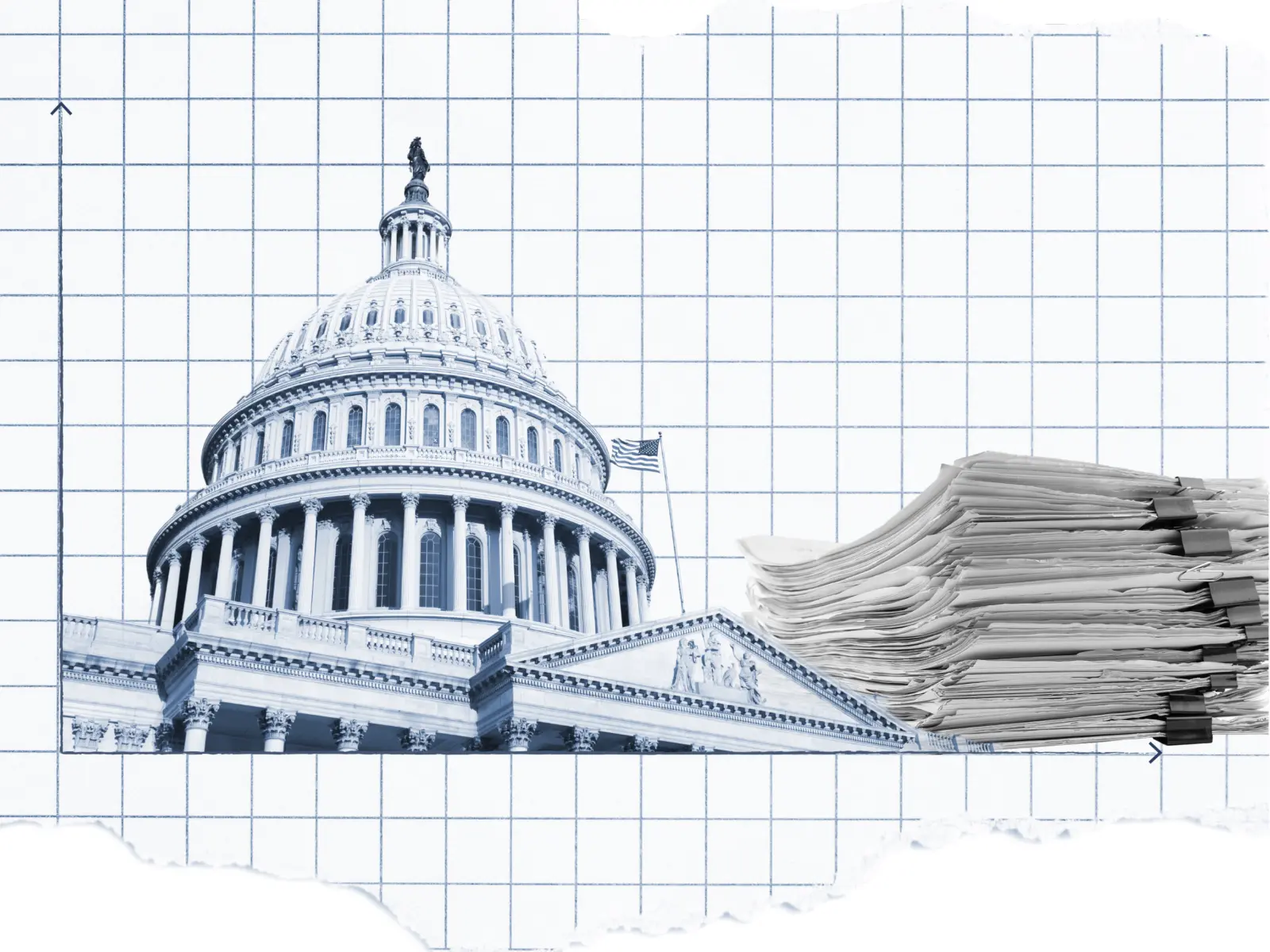As recently reported, the work opportunity tax credit (WOTC) — the largest employer-based hiring subsidy in the federal budget — is set to expire at the end of the year.1 Advocates have already launched a concerted effort to pressure lawmakers to extend the tax credit, which, based on Congressional Budget Office estimates, could cost $19 billion over the next decade if extended permanently.2 As congressional discussions about a potential year-end tax bill heat up, lawmakers should consider whether the WOTC produces results that justify its federal budgetary impact, or whether it merely provides windfalls to employers without affecting hiring decisions.
Enacted in 1996 for one year only,3 the WOTC was intended to encourage the hiring of members of disadvantaged groups who face significant obstacles to achieving stable lives. Since 1996 Congress has extended the expiration date more than a dozen times — often taking the opportunity to expand the categories of employees eligible for the credit. The WOTC tries to address a goal that almost everyone supports, because a good-paying job is the best pathway out of poverty. Although Congress enacted the WOTC in pursuit of worthy policy goals, new research finds that the WOTC is completely ineffective at achieving them.4
The WOTC is a generous credit for eligible businesses. It generally covers 40 percent of up to $6,000 in wages in the first year of employment (that is, a maximum credit of $2,400) for qualified workers.5To qualify for the 40 percent credit, a business must employ an applicable worker for at least 400 hours in the first year.6 The WOTC is administered as a general business credit. It is nonrefundable but may be carried back one year and carried forward up to 20 years.7 Tax-exempt organizations generally may not claim the credit except as a claim against payroll tax liability for qualified veterans.8
The WOTC was initially available for hiring recipients of cash payments under the Temporary Assistance for Needy Families (TANF) program. Congress has expanded WOTC eligibility over time to include certain veterans, felons, the long-term unemployed, recipients of Supplemental Security Income and Supplemental Nutritional Assistance Program (SNAP) benefits, long-term TANF recipients, and other groups. Several of these categories now benefit from an increased WOTC-eligible wage base or a longer eligibility period for the credit.9 According to the Labor Department, 1.58 million workers were certified as eligible for the WOTC in fiscal 2024. 10 The largest group of those hired are SNAP recipients, who comprise roughly 70 percent of total eligible hires in any given year. 11
Despite a general preference for the stability and certainty of permanent tax policy, making tax benefits temporary sometimes can be justified on the grounds that lawmakers use these legal expirations as an opportunity to examine the effectiveness and efficiency of the underlying policies, no matter how well-intended they are. In this case, there are long-standing questions about whether the WOTC really changes hiring practices or merely facilitates a cash transfer to a select group of businesses.
For years, frustratingly little evidence has been available to Congress to evaluate the WOTC at all. Researchers face challenges isolating causes for widespread hiring trends, and finding apples-to-apples comparisons to test theories can be close to impossible.
However, a recent study from economists at the University of Wisconsin-Madison and the University of Southern California has shed new light on the question. Sadly, it confirms what many have long suspected: While the goal of the program is laudable, the WOTC simply does not work. It benefits some businesses but does not affect their hiring decisions. 12
The study is an unusually ambitious and careful attempt to measure the WOTC’s success, using not only data from the program itself but records from welfare and transfer programs, demographic data, criminal justice records, and even quarterly earnings reports from potential employers. Through that wealth of information, the study’s authors tracked 13 million Wisconsin workers over two decades. They paid close attention to data from years when the program expanded to examine how the changing availability of the credit changed outcomes.
Despite this unprecedented scope, the study failed to find any evidence that the WOTC increased hiring in the targeted groups. The data indicate that the companies receiving the credit hired the same people they would have hired without the credit. This means that billions of taxpayer dollars intended to encourage hiring of disadvantaged groups are instead merely a windfall for businesses.
It is infamously hard to prove a negative. Yet the study’s authors assert that they are extremely confident in their conclusion, which is remarkable given the complexity of the data. No matter where they looked, the pattern was the same: The credit did not increase hiring of individuals from the eligible groups.
Nor did it lead to higher wages for those workers after hiring, another alleged benefit touted by defenders of the credit. Employers did not pass on the value of the credit to employees, and most WOTC jobs remain low or minimum wage. To understand how this could be, one must understand the overall structure of the credit and how it is enforced and implemented.
For this incentive to have an impact on decision-making, hiring managers must know before hiring if an applicant was eligible for the WOTC. However, only 13 percent of the job applications reviewed in the study even collected information about WOTC eligibility. While companies are required to prescreen applicants on or before the date a job offer is made — and that status is then verified by state workforce agencies — the information is not often made available to hiring managers.
Why not? The most common response by surveyed employers was that asking applicants about the requirements for WOTC eligibility — like receiving SNAP benefits or having a criminal record — during the hiring process could expose them to discrimination lawsuits. Employers also worried that asking about WOTC eligibility earlier in the hiring process could scare off applicants who would be reluctant to admit to receiving public assistance or having a criminal record because of social stigma.
As a result of these practices, WOTC claims more often reflect, rather than motivate, companies’ hiring decisions. They are filing for this tax benefit after making an employment offer independently and then determining the employee’s eligibility, rather than the tax benefit driving the extension of an offer in the first place. We see this in the data: According to the study, a staggering 97 to 100 percent of WOTC benefits amount to “pure windfall wastage.”13 That means employers receive taxpayer dollars for hiring decisions they would have made even if the WOTC did not exist.
Ironically, concerns about windfall wastage led Congress to create the WOTC in the first place. It replaced the targeted jobs tax credit, which studies showed also went almost entirely to businesses that had not considered the credit in hiring decisions. When Congress created the WOTC in 1996, it included requirements that before the employee is hired, both the employer claiming the credit and the applicable employee sign statements under penalty of perjury that, to the best of their knowledge, the employee qualifies.
Despite this and other safeguards, the basic dynamic has not changed — if anything, the incentives for companies to prevent hiring managers from considering WOTC applicability have grown as discrimination lawsuits have become more common.
The study did resolve one common criticism of the WOTC — that employers “churn” through employees, letting them go when their wages are no longer eligible for tax credits so more credit-eligible workers can be hired. The authors found no evidence that this is happening. Again, though, this points to how the credits are not influencing hiring practices one way or another.
As mentioned, making the WOTC permanent would cost taxpayers nearly $20 billion over the next decade at a time of unsustainable budget deficits. The biggest winners? A small group of large corporations. More than half of all WOTC subsidies studied in Wisconsin go to just 48 companies, many of them staffing agencies, publicly traded companies worth tens of billions of dollars, and fast-food chains. These corporations already hire enough WOTC-eligible workers to make the compliance costs of claiming the tax credits worth it; smaller businesses do not bother.
WOTC proponents argue that by helping people get jobs, the program reduces reliance on welfare and lowers crime. Again, these are laudable goals that we should be serious about achieving. But the study found no evidence to support these claims. Because the WOTC did not change who got a job, it did not reduce reliance on SNAP, lower criminal convictions, or increase stable employment. Further, the study finds that the WOTC does not bring about any next-level benefits for workers, either — thus creating no incentive for companies to raise wages, improve working conditions, or keep people in their jobs longer.
Reforming the credit is unlikely to bring about the result we want. Adding yet another paperwork requirement or condition would likely further shrink the pool of employers willing to jump through the hoops and add more costs without achieving results.
As it stands, taxpayers are footing the bill for a corporate tax break that does nothing to improve the lives of Americans facing structural barriers to employment. We should not be handing out corporate welfare under the illusion that it is helping disadvantaged workers without evidence that it is actually doing so.
So, what should we do instead?
Rather than continuing to add to the national debt to fund an ineffective program, Congress should consider pro-work reforms to programs like the earned income tax credit and the child tax credit, and it should directly address employers’ concerns about hiring workers with past criminal records. A recent field experiment found that crime and safety insurance was a particularly cost-effective way to motivate employers to give applicants with a criminal record a chance.14 Tort reforms that clarify employers’ responsibilities under negligent-hiring laws also appear to be effective. To find other solutions, we could use the funds to push states to pilot new, innovative approaches — using rigorous evaluations to tell us what works and what does not.15
The evidence is clear: The WOTC does not serve its stated purpose and is a waste of taxpayer dollars. Encouraging the hiring of workers from disadvantaged groups is a worthy goal. We must devote scarce public resources to solutions that actually achieve it.
-
1
Cady Stanton, Work Opportunity Credit at Risk as End-of-Year Deadline Looms, TAXNOTES (Sept. 8, 2025), https://www.taxnotes.com/tax-notes-today-federal/tax-policy/work-opportunity-credit-risk-end-year-deadline-looms/2025/09/08/7sz6r.
↩︎ -
2
Cong. Budget Off., Budgetary Outcomes Under Alternative Assumptions About Spending and Revenues (May 8, 2024), https://www.cbo.gov/publication/60114. While CBO provides an estimate of $16.6 billion over ten years, this estimate covers the 2025-2034 timeframe. Because, however, the WOTC does not expire until the end of 2025, the estimate for fiscal year 2025 is $0. As of this writing, Congress now operates under a 2026-2035 budget window. Extrapolating to 2035 based on the annual growth rate in the cost of the WOTC implies a 2035 cost of $1.98 billion. Thus, replacing 2025 with 2035 implies a ten-year cost of $18.6 billion.
↩︎ -
3
Small Business Job Protection Act of 1996, Pub. L. No. 104-188, § 1201, 110 Stat. 1755 (1996).
↩︎ -
4
Manisha Jain, Corina Mommaerts & Jeffrey Weaver, Hiring Subsidies for the Disadvantaged: Evidence from the Work Opportunity Tax Credit (Nat’l Bureau of Econ. Research, Working Paper, Apr. 1, 2025), https://conference.nber.org/conf_papers/f217761.pdf.
↩︎ -
5
I.R.C. §§ 51(a)(1), (b)(3).
↩︎ -
6
I.R.C. § 51(i)(3). Workers working between 120 and 400 hours are eligible for a reduced 25% credit.
↩︎ -
7
I.R.C. § 39(a)(2).
↩︎ -
8
I.R.C. §§ 52, 3111(e).
↩︎ -
9
I.R.C. § 51(d)(1).
↩︎ -
10
U.S. Dep’t of Labor, Emp. & Training Admin., WOTC Performance, https://www.dol.gov/agencies/eta/wotc/performance.
↩︎ -
11
Benjamin Collins & Sarah A. Donovan, The Work Opportunity Tax Credit, CRS Report No. R43729 (Sept. 25, 2018), https://www.congress.gov/crs-product/R43729.
↩︎ -
12
Jain, supra note 4, at 1.
↩︎ -
13
Id.
↩︎ -
14
Zoë B. Cullen, Will Dobbie & Mitch Hoffman, Increasing Demand for Workers with a Criminal Background, 138 Q.J. Econ. 103 (2023).
↩︎ -
15
Ben Pyle, Negligent Hiring: Recidivism and Employment with a Criminal Record (forthcoming 2026) (Nw. U. L. Rev.).
↩︎


















